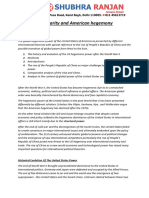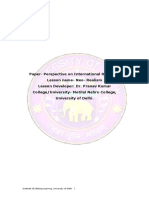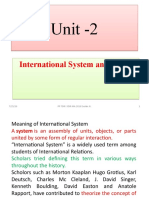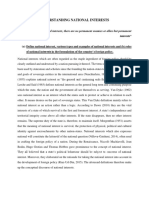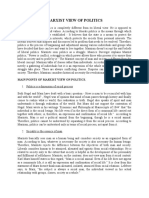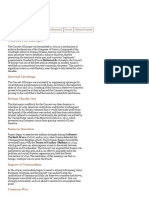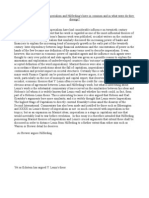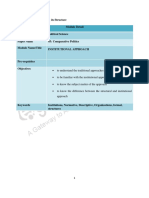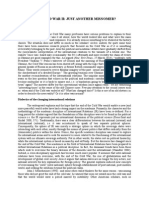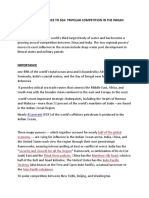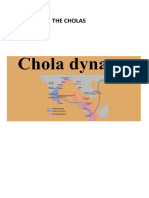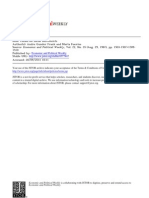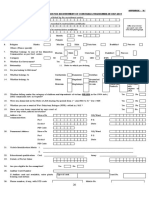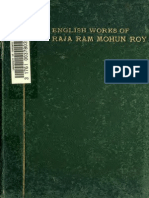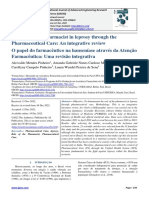Theories of Imperialism – notes
V.I Lenin (1916) Imperialism, the highest stage of capitalism
online: https://www.marxists.org/archive/lenin/works/1916/imp-hsc/
- monopoly finance capital demands new markets for expansion
- European empires compete for control and so drive war
Paul Baran and Paul Sweezy (1966) Monopoly Capital
Review online: https://monthlyreview.org/product/monopoly_capital/
- Capitalism is not a competitive system but rather dominated by monopolies
- Imperialism and world political economic relations have to be reinterpreted accordingly
Samir Amin (2012) ‘The Surplus in Monopoly Capitalism and the Imperialist Rent’
online: https://monthlyreview.org/2012/07/01/the-surplus-in-monopoly-capitalism-and-the-imperialist-rent/
- ‘surplus’ is not just drawn from labour, it is extracted internationally by monopoly power
Baran ‘extended Marx’s analysis of the dynamic of capital accumulation’ which had been
restricted to the ‘two departments’ of production and consumption, ‘by introducing a
surplus-absorbing ‘third department’. Baran said and Amin agreed that ‘monopoly capital’
can ‘pay workers in the periphery of global capitalism a wage considerably below that in the
center … This results in an enormous growth of surplus in the periphery much of which is
siphoned off as imperial rent’ and this mostly goes to the ‘center’ via MNCs.
Latin America’s anti-imperialist school
- Imperialism v. independence is the fundamental international contradiction
- Social and socialist development must be original, built on historical circumstances (Simón
Rodríguez 1769-1854; José Martí 1853-1895; José Carlos Mariátegui 1894-1930).
- A ‘second independence’ is required, after the colonial era, to be free of the imperial-comprador
class relationship (José Martí, Fidel Castro, Hugo Chavez).
----------
Anglo-American liberalism – capitalist ‘sustained growth’ & ‘Hegemonic Stability’
Neither English nor US American liberalism had traditions of historical analysis, but some were
invented in the 1960s and 1970s, often responding to popular Marxist and Neo-Marxist views.
Walt Rostow (1960) The Stages of Economic Growth: A Non-Communist Manifesto, online:
https://web.archive.org/web/20130223023302/http://www.mtholyoke.edu/acad/intrel/ipe/rostow.htm
- all countries can emulate British and Japanese industrialisation, in stages (traditional, enclosure,
surplus, industrialisation, maturity, mass consumption) of endogenous growth
Hegemonic stability theory (HST) – a North American counter to ‘imperialism’
- HST says the international order requires a single ‘benevolent dictator’ to stabilise relations, carry
the costs of global security and provide ‘public goods’ (stable currencies, free trade) to all (Charles
Kindleberger, Robert Gilpin, Stephen Krasner) – relied on by ‘single superpower’ advocates
Critics of Anglo-American liberalism: what about the ‘surplus’ robbed from the colonies?
Caribbean: sugar plantations & British capitalism - Eric Williams (1944) Capitalism and Slavery
Latin America: silver and gold funded Spanish and Portuguese development for centuries
India: biggest colony, stolen resources and ‘unequal trade’ funded British capitalist development
1
�The nine 21st century wars of Washington’s ‘New Middle East’
Begun by the Bush regime in 2001, announced as a ‘New Middle East’ plan in 2006. The aim is as
with previous imperial strategies: (1) to dominate an entire region and exclude possible big power
rivals; (2) to destroy independent political will within the region and to keep the resistance
fragmented; (3) to control the terms of access to resources for all others.
Palestine
Israel began as a European-Jewish colony in Palestine, with ethnic cleansing, ends up as an
apartheid state. It remains important to Washington, to destabilise the region. Palestine now 50-50
Arab-Jewish, no possible ‘two state solution’ ‘One Democratic State’ resistance campaign.
Iran
Largest independent state in the region, remains the obsessive focus of Tel Aviv and Washington.
Subject to constant economic war, terrorist attack (MEK, DAESH) and threats, on various pretexts.
Iran supports the resistance in Palestine, Lebanon, Syria, Iraq and Yemen.
Afghanistan
Strategically located central Asian state which was smashed in 2001, but which cannot be
dominated or administered by a US puppet regime. US looking for pretexts to leave.
Iraq
Invaded after Afghanistan, smashing the former client state which had proved useful in attacking
and weakening Iran. The post-invasion state, although weak, began good relations with its
neighbours, leading Washington to direct Saudi-backed terrorism (DAESH) to weaken Baghdad.
Lebanon
Israeli invasion in 2006, encouraged by the Bush regime, failed badly. Hezbollah proved its
credentials as a leading resistance force in the Arab and Muslim world.
Libya
After widespread reaction to open invasions, Washington turns to ‘smart power’ and proxy wars.
Libya was not integrated into AfriCom and maintained distinct ambitions in the African Union; but
it was rapidly destroyed by the US-Saudi-Qatari backed Salafist insurgency and NATO bombing.
Syria
As with Libya, Salafist and Muslim Brotherhood terrorism was funded and armed by Washington
and its regional allies. However the Syrian Arab Army kept public support, resisting for four years,
before Russian and Iranian allies joined in and turned the tide. Washington now occupies key
border areas in attempts to block Syrian coordination with Iraq and Iran.
Yemen
A popular revolution led by Ansarallah (‘Houthis’) and the Yemeni Army drives out Saudi-backed
puppet President Hadi, but it is ferociously attacked by Gulf monarchies, using NATO weapons.
Bahrain
Repression of Shi’a majority by Bahrain monarchy eventually leads to armed resistance in 2019.
The Bahrain regime is militarily backed by Washington and the Saudis.
